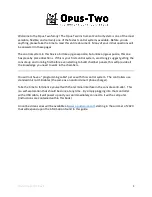
Installation of the instrument
Commissioning of the instrument
23
SYCON
3000 C
Installation of the instrument
1. Removing the mounting plate
Remove the 4 outer fastening screws of the
mounting plate, withdraw the mounting plate
to the front and remove the rear-side plug
connector after a ¼ anticlockwise rotation.
2. Mounting the enclosure
Mount the instrument with the aid of 4 screws
at eye level and easily accessible for the op-
erator.
Avoid the proximity of strong light sources.
Follow the drilling plan for the asembly on the
next page.
3. Electrical connections
Remove the terminal box cover after unscrew-
ing the lateral screws.
Establish the electrical connections (for this
purpose, see the connection information on
page 25 ff.).
Heed the regulations and guidelines of the lo-
cal electricity supply companies as well as ex-
isting plant norms and standards.
4. Assembling the instrument
Screw on the terminal box cover, plug in the
connectors and lock the position with a ¼
clockwise turn. Refasten the mounting plate.
5. Setting up the water outflow
Fit a PVC hose with an interior diameter di-
ameter of 6-7 mm to the hose connector and
secure with a pinch clamp. Place the PVC
hose in an open funnel beneath the analyser.
6. Setting up the water inflow
Place a pressure-resistant hose with an inner
diameter of 6-7mm on the quick-seal coupling
and secure it with a hose clamp.
The quick-seal coupling is equipped with a
valve. It is recommended, however, that an
additionalmanual shut-off valve be installed
between the treatment plant and the analyser.
In order to keep the amount of rinsing water
before an analysis small, the conduit to the
treatment plant should have a small cross-
section and be as short as possible. No cop-
per tubing can be used as material for the
supply line. High-grade steel or plastic pipes
and pressure-resistant hoses can be imple-
mented.
Commissioning the instrument
1. Filling with indicator
Tilt the indicator seal downwards, insert the 500
ml bottle and tilt the bottle upwards. Pay attention
that the indicator type is correct. The indicator type
used must match the indicator type programmed.
2. Switching on the instrument
If applicable, open the manual stop valve. If
applicable, switch on the main switch for the
power supply to the analyser. Switch on the
power switch of the analyser.
3. Feeding indicator
When commissioning the instrument for the
first time, the metering pump must be switched
on until the indicator flows into the measuring
chamber. Follow the instructions in "Switching
the metering pump on and off" on page 21 in
the section "Service setting".
Attention!
The right-hand safety catch of the hose pump must
be locked in place, so that the pressure lever
presses the hose against the transport rollers.
Otherwise, the hose pump does not function free
of error and indicator constantly flows into the
measuring chamber (shut-off function).
4. Programming the instrument
After the indicator has been fed in, the "END"
key is pressed once more. This quits the ser-
vice setting (servicing mode) and an analysis
can be started. The instrument is appropriately
preprogrammed. Nevertheless, now or at a
later stage, it can be reprogrammed to adapt
to local conditions and requirements. Of par-
ticular importance are the entries pertaining to
the indicator type used and the functions of
the inputs and outputs. Corresponding instruc-
tions for the programming can be found on
page 10 ff.
Attention!
In the event of malfunctions (e.g. defective
hoses), water or indicator can seep out of the
instrument. Make sure that no subsequent
damage can occur as a result. Replace the
hoses of the hose pump regularly (see the sec-
tion "Replacement of components" on page
31).











































